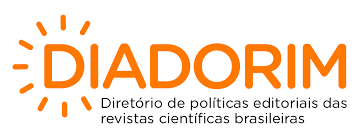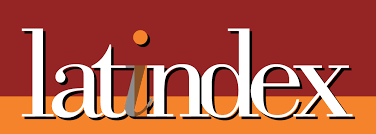Submissions
Submission Preparation Checklist
As part of the submission process, authors are required to check off their submission's compliance with all of the following items, and submissions may be returned to authors that do not adhere to these guidelines.- They must be typed in .doc or .rtf extension, Times New Roman font, size 12, double-spaced throughout the document (including tables), with 2.5 cm margins and left alignment. All pages must be numbered in the upper right corner. Avoid abbreviations and acronyms as much as possible. In certain cases, it is suggested that in the first appearance in the text, the abbreviation and / or acronym in parentheses should be spelled out. Example: Dengue Hemorrhagic Fever (DHF). Ethical considerations: mention the name of the Ethics Committee that approved the project. Informations that can identify a person participating in a survey should not be published. It should be clarified that the research was carried out according to the criteria established by the Declaration of Helsinki with its modifications (Bull World Health Organ 2001; 79:373-374). The manuscript must contain the following structure:
-
References and citations must be standardized in the Vancouver style. All authors and works cited in the text must be included in this section and vice versa. Number the references in order of entry and use these numbers for citations in the text. Avoid excessive number of references, selecting the most relevant for each statement and giving preference to the most recent works. Do not use citations that are difficult to access, such as abstracts of papers presented in congresses, theses or publications with restricted circulation (not indexed). Do not use references such as "unpublished observations" and "personal communication". Articles accepted for publication can be cited accompanied by the expression: "accepted and awaiting publication" or "in press", indicating periodical, volume and year. Papers accepted by journals that are available online, but with no indication of issues and pages, should be cited as "ahead of print".
Other authors' publications (self-citation) should be used only if there is a clear need and are related to the topic. In this case, include among the bibliographical references only original works published in regular journals (do not quote chapters or reviews). The authors are responsible for the accuracy of the data contained in the bibliographic references.
For all references, quote the authors up to the sixth. If there are more than six authors, mention the first six, followed by the expression et al. -
The text of original articles is usually, but not necessarily, divided into Introduction, Material and Methods, Results and Discussion. These sections may include sub-items, when appropriate. The other types of articles do not need to follow this structure.
- Introduction: The introduction must contain the presentation of the problem and the purpose of the study. Cite only strictly pertinent references.
- Material and Methods: clear and precise description of the methodology used, including the selection of the participating individuals. The methods and procedures must be described in detail to allow replication by other professionals. Describe the statistical methods in sufficient detail to verify the results achieved. Present quantitative data, when appropriate, with appropriate indicators of margin of error or reliability. Do not put only the p-values, as it omits important quantitative information. Set the exact p values up to p <0.001. Indicate which statistical programs were used.
- Results: Present the results in a logical sequence. Do not repeat in the text all the data in the tables or illustrations, only the most relevant observations. Use graphs as an alternative to tables with a lot of data. Do not repeat data in graphs and tables. Decrease tables and figures to only those necessary.
- Discussion: Highlight the new and important aspects. Relate the results observed to those of other studies with their implications and limitations. Do not repeat the Results data in detail.
Copyright Notice
Copyright
The Journal of Bone Marrow Transplantation and Cellular Therapy is licensed under the Creative Commons Attribution 4.0 (CC BY 4.0). Thus, the copyright belongs to the authors. The license provides free and immediate access to the work. It allows any user to read, download, copy, distribute, print, search the full texts of the articles or create links to them, track the articles for indexing, use them as data for software or use them for any other legal purpose, including commercial purposes, as long as due credit is given. The full details of the license are available at https://creativecommons.org/licenses/by/4.0/
Intellectual Property and Terms of Use
Authors of articles published by the Journal of Bone Marrow Transplantation and Cellular Therapy retain copyright over their work.
The Journal of Bone Marrow Transplantation and Cellular Therapy, encourages authors to self-archive their accepted manuscripts by publishing them on personal blogs, institutional repositories, and academic social media, as well as posting them on their social media, as long as the complete citation to the journal's website version is included.
Privacy Statement
Declaration Transfer of Copyright
The author (s) hereby declare that the article entitled “TITLE OF THE ARTICLE” sent to the committee editorial of the Journal of Bone Marrow Transplantation and Cellular Therapy is an original work, which has not been published or is being considered for publication in another magazine, whether in printed or electronic format.
The author (s) of the manuscript, mentioned above, also declare that:
-
They participated sufficiently in the work to make their responsibility for the content public.
-
The use of any trademark or copyright within the manuscript has been credited to its owner or permission to use the name has been granted, if necessary.
Privacy Policy for readers
The names and addresses informed in this magazine will be used exclusively for the services provided by this publication, and will not be made available for other purposes or to third parties.








